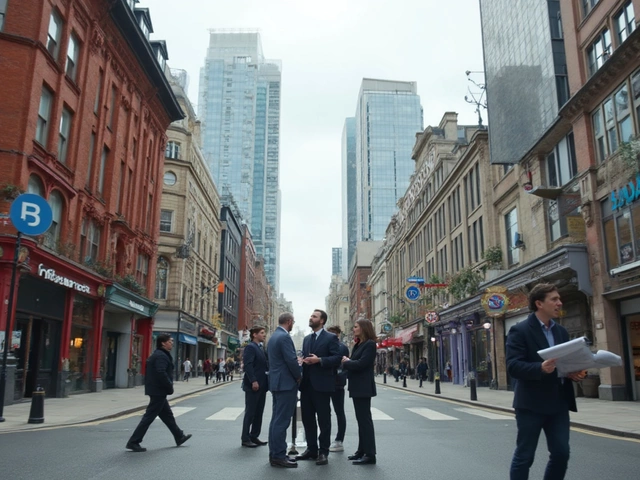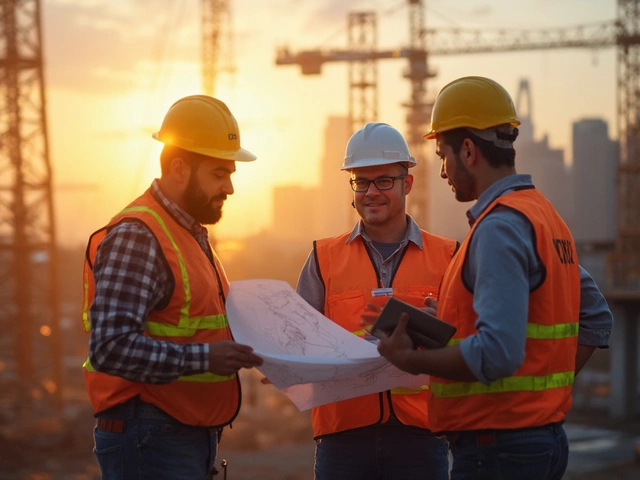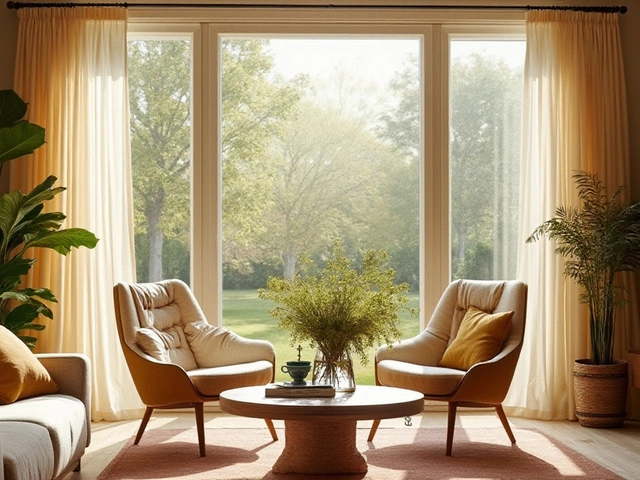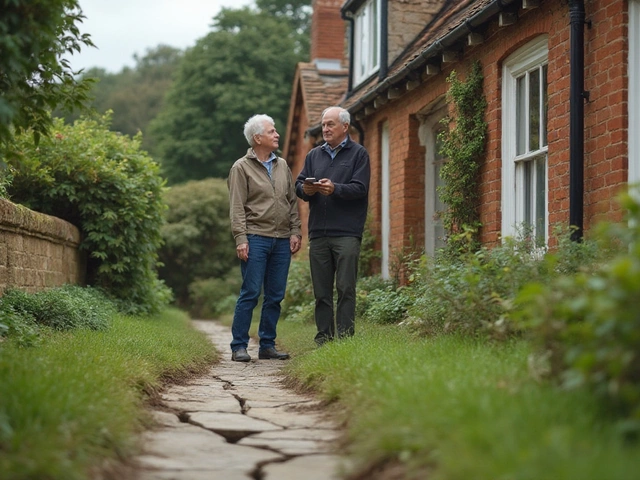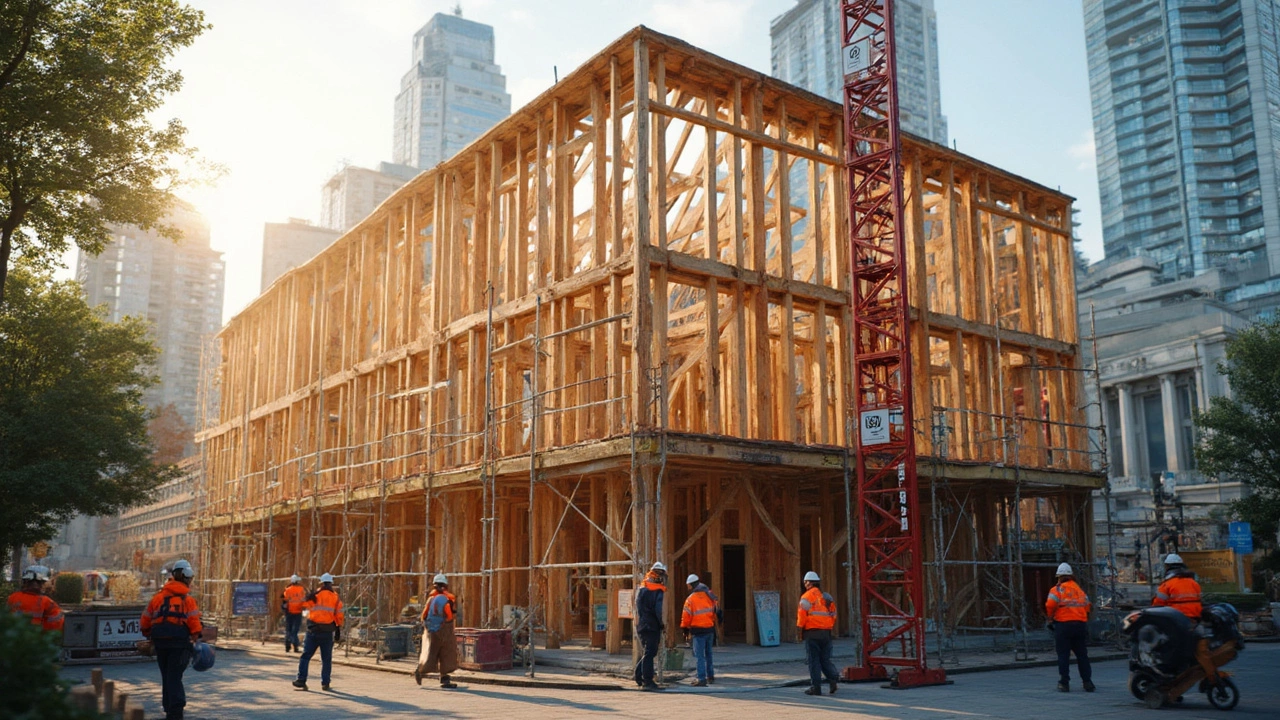
If you keep hearing "Type 5 construction" and wonder what it actually means, here's a straight answer: it's called wood-frame construction. That's right—think of houses, small apartment buildings, or even trendy shops with timber bones under the paint and drywall. In the building world, the 'type' tells you what the main structure is made of, and with Type 5, it's all about wood.
Sounds old school? That's because it is. But it's also the most flexible and budget-friendly approach for smaller commercial jobs. Codes let you slap up walls, floors, and roofs with wood—as long as you follow the safety rules. It's the go-to for lots of developers because you can build fast, adapt designs easily, and keep costs low. But you also need to watch out for special rules, especially about fire protection. Insurance companies and city inspectors look at these buildings differently, so understanding the basics can save you headaches later.
- Type 5 Construction Explained
- Where You See Type 5 in Commercial Builds
- Why Type 5 Matters: Code and Costs
- Risks and Fire Safety
- Tips for Using Type 5 Wisely
Type 5 Construction Explained
If you've ever wondered why so many strip malls, small offices, or corner shops seem to pop up quickly, it's because of Type 5 construction. In simple terms, this means the whole structure (walls, floors, and roofs) is made from wood or lightweight materials that aren’t protected by fire-resistant barriers. That’s the biggest thing that sets it apart from the other types, which often use steel or concrete.
There are actually two flavors: Type 5A (protected) and Type 5B (unprotected). With 5A, builders add some fire-resistant features, like special drywall around structural wood, while 5B skips those upgrades. Most single-family homes and duplexes are 5B, but you’ll see 5A in a lot of new low-rise apartment and retail projects where codes demand just a bit more fire safety.
- Type 5A (protected): Has extra fireproof coatings or drywall coverings.
- Type 5B (unprotected): Runs with standard wood frames and drywall, nothing fancy for fire safety.
Here’s a quick cheat sheet on the basics:
| Feature | Type 5A (Protected) | Type 5B (Unprotected) |
|---|---|---|
| Main material | Wood with added protection | Wood, no extra protection |
| Typical use | Mid-rise apartments, commercial | Houses, low-rise retail |
| Max stories (IBC) | Up to 4 stories (w/ sprinklers) | Up to 3 stories |
Since it’s all about speed and savings, builders love it for lots of projects that don’t need to go sky-high. If a commercial job qualifies as Type 5, you’ll usually see faster builds, lower budgets, and easier on-site changes if plans shift mid-project. But every shortcut has a trade-off, and for wood-frame buildings, that’s usually fire and weather resistance. That’s why local building codes set strict limits on how big and tall you can go with Type 5—no high-rises allowed.
So, when you hear someone mention Type 5, just think “wood-frame everything.” It’s that straightforward—and knowing this can help you spot which buildings around you were built for budget and speed, not for heavy-duty protection.
Where You See Type 5 in Commercial Builds
So, where does Type 5 construction pop up in real-world commercial projects? It’s everywhere once you know what to look for, especially in places that don’t need to go super tall or deal with huge crowds. Type 5 shines in buildings up to three stories, and code usually limits the size to keep things safe. That’s why you’ll spot it most in low-rise projects.
Here are some of the most common spots where Type 5 sticks out:
- Small strip malls and neighborhood shopping centers
- Restaurants and cafes in stand-alone or end-cap spaces
- Two- or three-story office buildings and professional suites
- Apartment complexes up to four stories (check your city’s version of the code—sometimes the top is four, but often it’s three)
- Medical clinics and dental offices, especially in smaller towns
A lot of retail brands you know—like Starbucks, 7-Eleven, or Domino’s—set up their single-story locations using wood-frame. Design flexibility is a big plus. You can shift walls, pop in windows, or add partitions without massive structural changes.
Type 5 is also popular for "adaptive reuse" projects, where older wood-frame houses get converted into offices, boutiques, or spas. Since you can move things around easily, businesses can put their own stamp on a place without gutting it.
Here's a handy look at how Type 5 stacks up in different commercial building types:
| Building Type | Common Height (Stories) | Why Use Type 5? |
|---|---|---|
| Strip Mall | 1-2 | Fast build, lower cost |
| Medical Office | 1-3 | Adaptable layout for changing needs |
| Small Apartment | 2-4 | Easy to scale up in phases |
| Restaurant (standalone) | 1 | Quick tenant fit-out |
If you’re ever unsure what construction type a building is, look behind the walls—if you see lots of wood framing, odds are you’re looking at Type 5. But if you’re building new or remodeling, check local codes first. Some cities have different limits based on fire history or how close buildings are to each other. When in doubt, ask the city planner or a local architect—they’ll know their Type 5 from their Type 2 in no time.
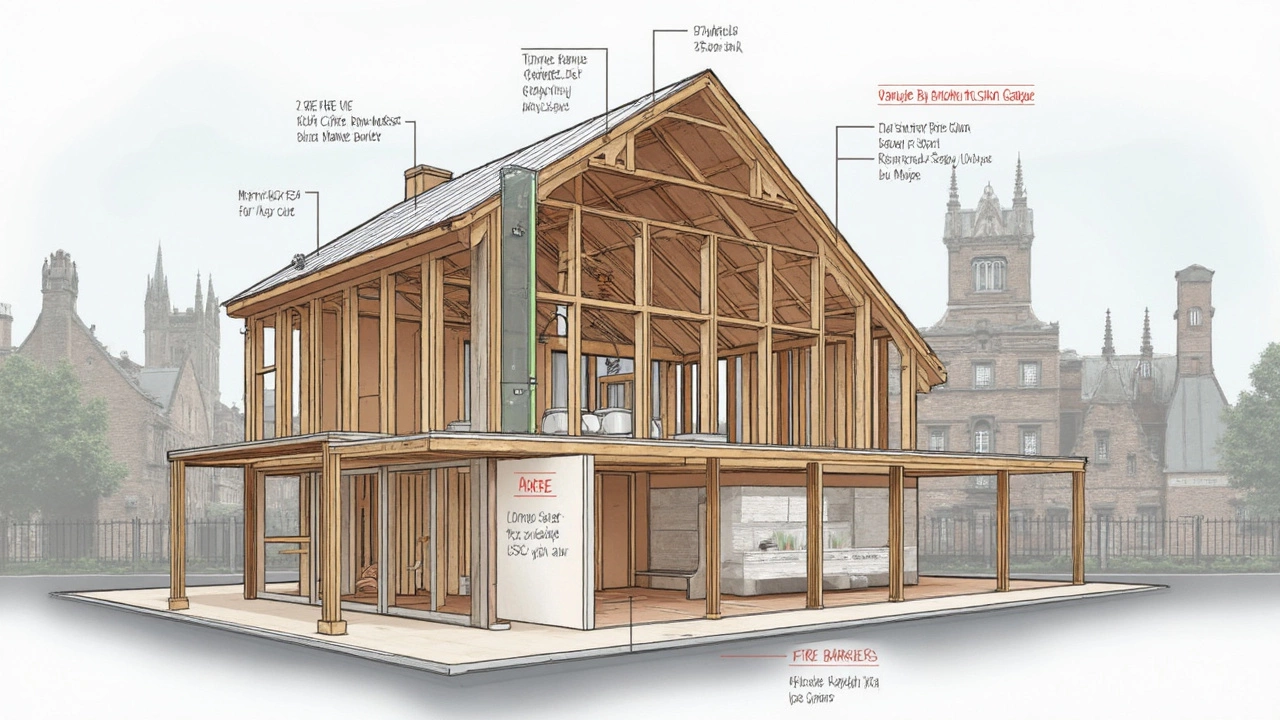
Why Type 5 Matters: Code and Costs
If you're planning any kind of commercial project, knowing about Type 5 construction can save you both money and time. The main reason Type 5 is such a big deal? It's usually the cheapest way to put up a legal structure for shops, offices, or smaller apartment buildings. Material costs are lower since wood is less expensive than steel and concrete. Labor goes quicker, too, because most crews already know how to frame in wood.
But here’s the catch: code rules keep things in check. The International Building Code (IBC) has clear limits for Type 5—both in height and square footage. Most local governments stick close to those numbers, though they might tweak a few things. For instance, in many U.S. cities, a typical Type 5 building maxes out at three stories tall and about 12,000 square feet per floor. If you install fire sprinklers, they often let you bump up those limits a bit.
| Factor | Type 5 (Wood-Frame) | Type 2 (Non-Combustible) |
|---|---|---|
| Common Use | Small shops, offices, apartments | Warehouses, large retail, schools |
| Typical Max Height | Up to 3 stories (with exceptions for fire sprinklers) | Much taller (sometimes 10+ stories) |
| Material Cost | Lowest | Moderate to high |
| Labor Speed | Fastest | Slower |
| Fire Risk | Higher (needs more fire protection) | Lower |
Another thing: city planning departments really zoom in on fire protection with wood structures. You usually have to add more drywall, special doors, or fire sprinklers—especially if you build close to another property. And if you’re hoping to save money, watch out for design changes midstream. Code changes—even small ones, like a taller ceiling or a slightly bigger office—can push the whole building up into a stricter category, which means more costs and headaches.
If you're working with a tight budget or expect to change things up later, Type 5 is hard to beat. But if your project needs to go big—or stay open for long hours with lots of people inside—you might need to step up to a more fireproof structure. Before you sign off on anything, check the local code and talk with your builder. That one conversation can mean the difference between smooth sailing and a bunch of expensive surprises.
Risks and Fire Safety
Here’s where Type 5 construction can make people nervous: wood burns, and that’s the main risk. Unlike concrete or steel, timber frames can catch fire fast, especially during construction when fire protection isn’t finished. According to the National Fire Protection Association (NFPA), buildings under construction have four times the fire risk compared to finished ones—most of those fires start in wood-frame structures.
All that said, following the fire code really makes a difference. Modern rules require a mix of things to keep flames in check and give people time to get out. Sprinklers, fire-rated walls, and working smoke alarms are not just nice-to-haves—they’re often required by law. Plus, you’ve got to pay attention to how much space you’ve got between buildings. The closer you cram Type 5 buildings together, the higher your risk if a fire breaks out.
| Construction Type | Required Fire Resistance (Hours) | Typical Sprinkler Requirement |
|---|---|---|
| Type 1 (Concrete/Steel) | 2-3 | Sometimes |
| Type 3 (Brick/Wood) | 1-2 | Often |
| Type 5 (Wood-Frame) | 0-1 | Almost Always |
One big tip: Always keep building materials secured and clear away trash daily during construction. A lot of fires start from tossed cigarette butts or sparks hitting sawdust. Once the project is finished, regular checks on alarms and sprinklers matter just as much as having them in the first place. Most insurance claims for Type 5 construction relate to fire damage, so good systems can save money and, more importantly, lives.
- Lock up building sites after hours to keep people out.
- Don’t store flammable stuff inside during construction.
- Get to know your local fire marshal—they’ll help spot risks early.
Some cities even give incentives for extra fire barriers or higher-grade sprinklers, so check local rules. Type 5 construction isn’t less safe by default, but you have to stay on top of fire safety right from the blueprints all the way through daily building use.

Tips for Using Type 5 Wisely
If you’re thinking about using Type 5 construction in your next commercial project, a little planning goes a long way. Wood may be easy to work with, but there’s a bunch of stuff you need to get right to avoid problems—even before your first nail hits the board.
- Make friends with your local code inspector. Local codes sometimes add extra rules for wood-frame buildings. For example, some cities require fire sprinklers in all new Type 5 commercial projects, even if state code doesn’t.
- Go heavy on fire protection. Wood burns—it’s just a fact. Most builders now add extra layers of drywall to walls and ceilings for at least a 1-hour fire rating. Sprinkler systems aren’t just a nice-to-have; they’re a must for most cities.
- Plan for pests and moisture. Wood can attract termites and mold. It’s smart to use pressure-treated lumber for ground-contact areas, and always install barriers to keep moisture out—think vapor barriers and sealed joints.
- Watch your heights and sizes. Codes usually limit Type 5 buildings to 3–4 stories and smaller floor areas. If you’re planning anything taller or wider, double-check if you need to upgrade to Type 3 or 2.
- Shop your insurance early. Insurers treat wood-frame commercial buildings as riskier. Some may charge 10–15% more than for steel or concrete, so lock in quotes before you finalize your budget.
Here’s a little cheat sheet you can use when weighing your options:
| Feature | Type 5 (Wood Frame) | Type 2/3 (Noncombustible) |
|---|---|---|
| Max Stories (IBC) | Up to 4 | Up to 6-12 |
| Fire Rating | 1 hr typical | 2+ hrs typical |
| Construction Cost (per sq ft) | $110–$150 | $160–$230 |
| Time to Build | Fastest | Slower |
| Insurance Rates | Higher | Lower |
Bottom line: Type 5 construction works great for budget builds and flexible designs, but you need to stay sharp on fire safety and pest proofing. Always ask local pros for advice—they know what flies in your city’s latest code updates.
